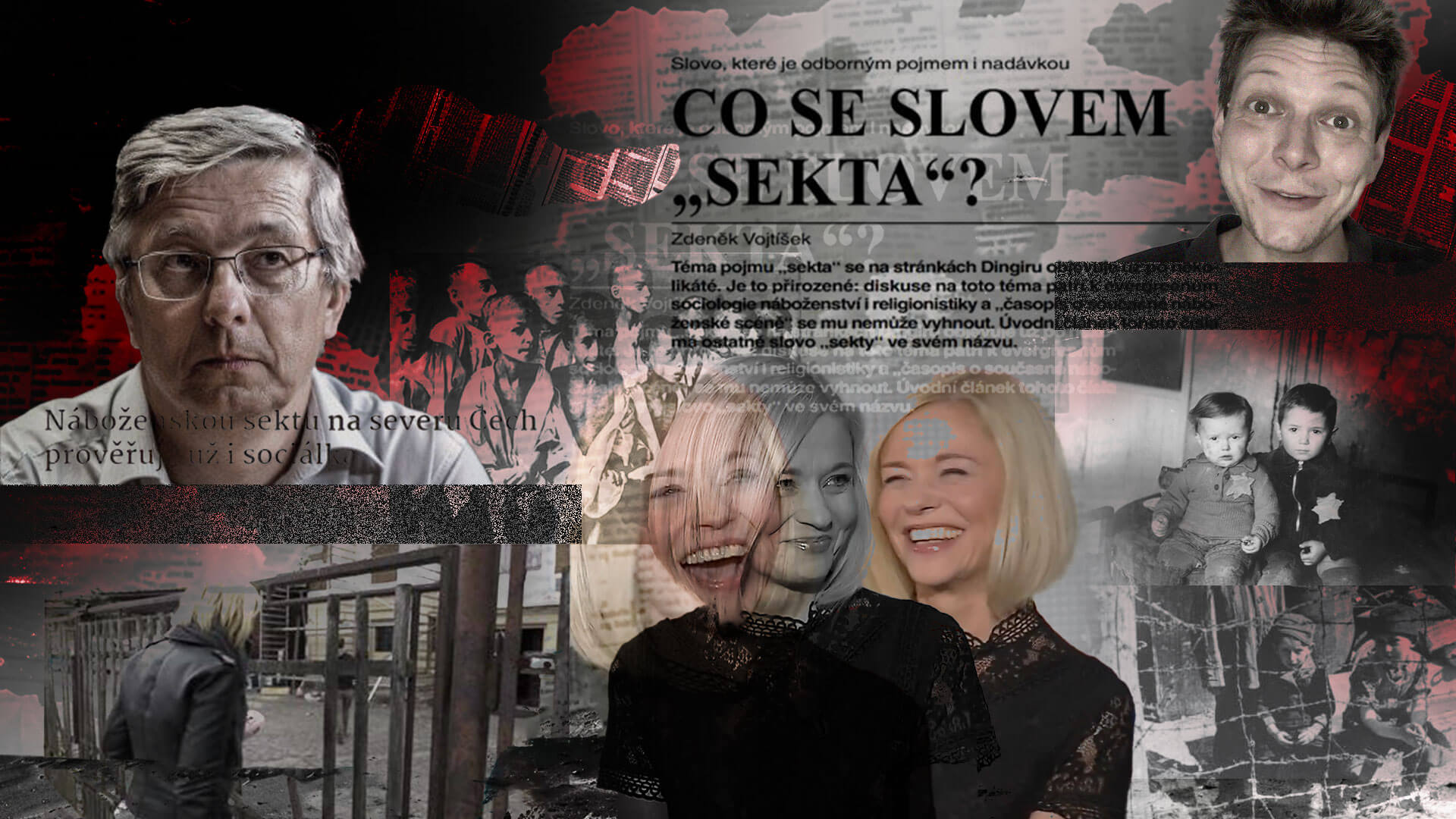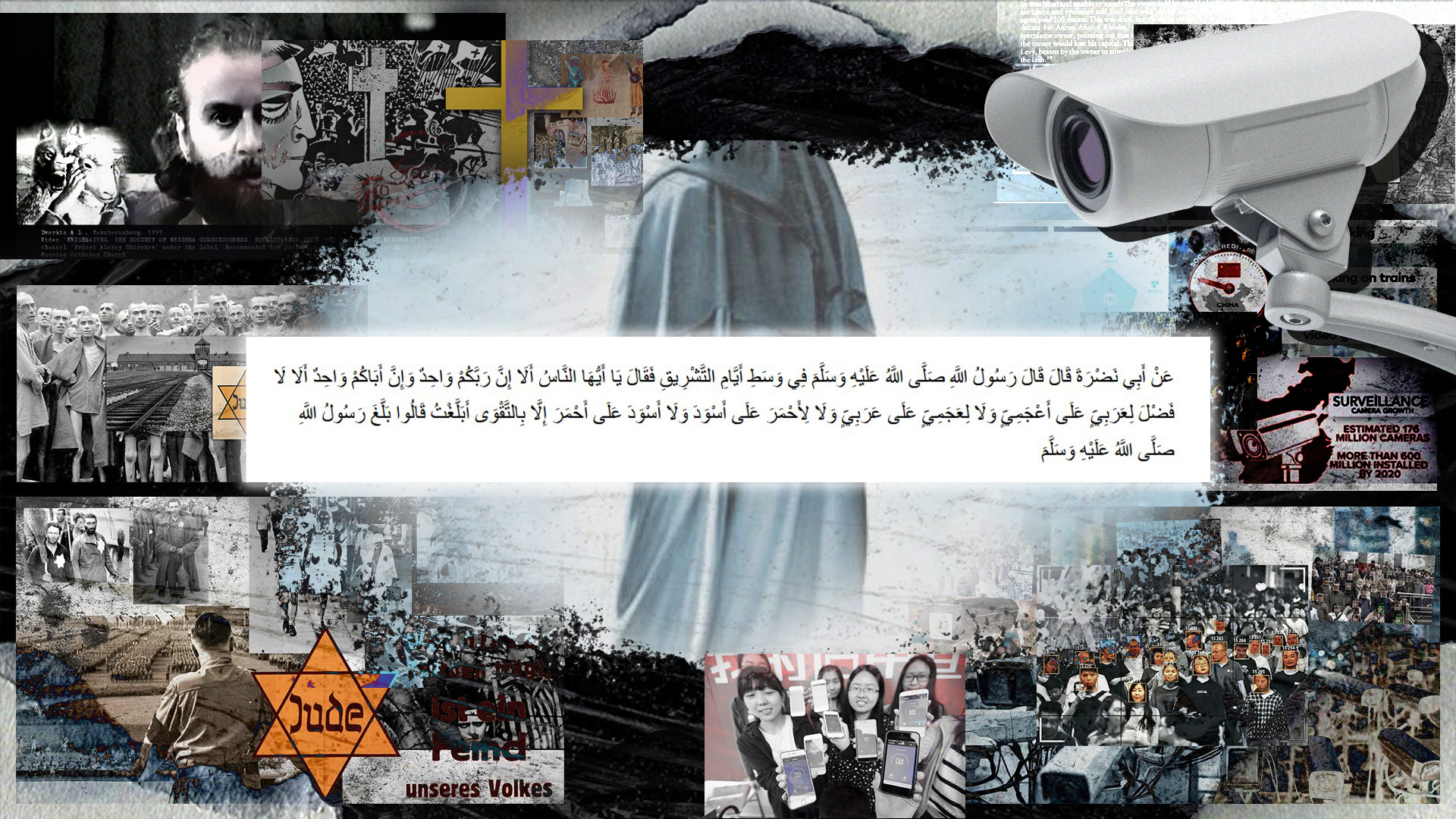In recent years, the Czech anti-cult movement has become particularly active. These anti-cult activists operate across various internet platforms, have agents in the media, and create their own outlets. Their targets include organizations like Jehovah’s Witnesses, Shincheonji Church, The Church of Jesus Christ of Latter-day Saints, and Scientologists. Some anti-cult activists and their agents in the media also target political figures such as American presidential candidate Donald Trump, Slovak politician Robert Fico, and Czech politician Andrej Babiš.
The Czech anti-cult movement has repeatedly been seen trying to claim its independence and distinction from anti-cult organizations in other countries. However, there are a number of factors in their activities that are direct indicators of the same pattern, the same instigation for action, and the same center of control.
Russian Influence in Czech Anti-Cult Tactics
Recently, on the page of Czech anti-cult activist Jakub Jahl, the phrase “Pomozte nám s deregistrací Jehovistů” (Help us deregister Jehovah’s Witnesses) has appeared.

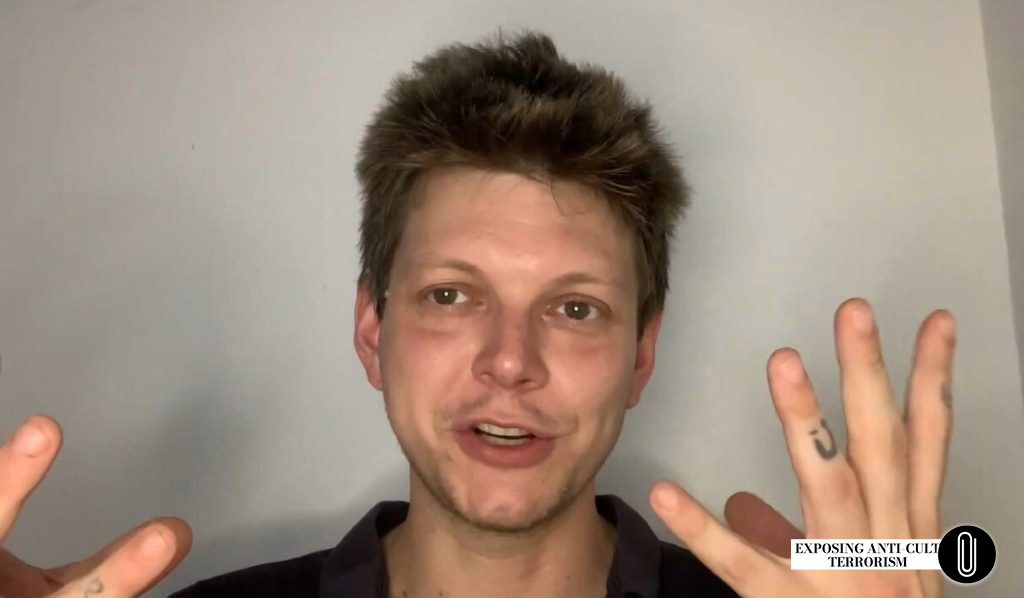
The prefix “de-” is not new to anti-cult activists. It originated from expressions used by Russian cult fighters who ideologically supported and prepared the war in Ukraine. They were the first to use phrases like “denazify” and “desatanize” Ukraine, spreading this narrative in the masses. Moreover, in Russia, driven by Russian anti-cult activists from RACIRS, there has been an ongoing and aggressive persecution of Jehovah’s Witnesses for many years.
Why has this very narrative, particularly towards this religious movement, emerged in a European country like the Czech Republic? The search for an answer leads to some unsettling conclusions.
Additionally, Jakub Jahl references the website https://sekty.tv/ on his page.

It should be noted that the name of the website «Pomoc obětem sekt» (“Help for Victims of Cults”). This wording conveys an appearance of supposedly good intentions, but is actually a deliberate manipulation. The very notion of “victims” inherently suggests the presence of a “perpetrator,” leading website visitors to form a negative moral judgment about organizations labeled as “cults” and aligning them with the anti-cultists’ perspective, while discouraging any critical assessment of their publications. The site’s creators appeal to the unconscious human need of their readers, who suddenly discover that they require protection. This heightened demand for security further reinforces the anti-cult rhetoric in them, precluding any attempts to critically evaluate the information presented by anti-cultists.

One of the few names associated with the site sekty.tv, aside from Jakub Jahl, is K. Ciroková.

Kristina Ciroková, as it turns out, is a reporter for Czech media who actively covers new religious movements, labeling them as “sects” and “cults” and violating all democratic principles, the presumption of innocence, and journalistic ethics. What is the reason for such destructive human activity? What drives a journalist to break laws and international human rights, act against their fellow citizens, and risk criminal liability just to please their mentors from RACIRS? Moreover, many of her publications are also filled with criticism of the government, law enforcement, and numerous baseless accusations, either distorting existing facts or presenting no evidence at all.

An analysis of Kristina Ciroková’s activities (articles on Seznam Zprávy and episodes of the video program Terén) and Jakub Jahl’s work (particularly his YouTube channel: BA. Jakub Jahl – Religions and Cults (Sects)) reveals clear parallels with the actions of Russian anti-cultists. Moreover, the methods used by both Ciroková and Jahl align perfectly with instructions found in Russian anti-cult manuals from RACIRS. For example:
International Conference “Totalitarian Sects: The Threat of the 21st Century,” 2001
Archpriest Dmitry Smirnov stated:



It’s worth noting that these instructions were given 23 years ago. Posters and newspapers were methods of that time, and today, the Internet plays a dominant role. While the form of information delivery has changed, the essence of the methods to combat undesirable organizations remains the same:
- Disseminating false information about organizations using derogatory labels like “sect,” “cult,” “totalitarian sect,” and “destructive cult”.
- Provoking and inciting citizens, and creating public opinion favorable to anti-cult organizations.
- Exerting pressure on authorities.
- Creating organizations composed of young people and students to infiltrate targeted organizations in order to gather information and report it back to anti-cult handlers, and also to destabilize those organizations.
- Disseminating information about members of labeled organizations with description of details such as names, home and work addresses, phone numbers, and creating photo and video materials, including with their appearance and place of residence, and publishing them in a defamatory context.
- Making baseless accusations and using facts which are either unverified, that is, taken from the public domain, or deliberately fabricated.
Kristina Ciroková and Jakub Jahl are well-versed in violating their country’s constitution, international human rights, and infringing on privacy and confidentiality 1, 2, 3:



As these anti-cult activists directly influence the Czech media landscape, the reason behind the strongly negative perception of new religious movements in Czech society becomes clear. Their rhetoric is strictly black-and-white, where white represents themselves and black represents the organizations they label as “cults.” Anti-cult activists present rumors and gossip from other sources (sometimes deemed reputable) with such confidence that they often see no need to provide more reliable evidence. This results in a double hermeneutic effect, where previously formed conclusions and concepts about a subject become so ingrained in society’s everyday life that they alter people’s mindset and significantly influence new research on the subject. Journalists in the media who are agents of RACIRS and their collaborators do not aim for systematic in-depth study of specialized literature, other viewpoints, or analysis to detect fake news and defamation in the sources they find. Instead, their work relies on borrowing previously published information, regardless of its accuracy. Their goal is an informational terror attack, an explosion among the masses, imprinting the image of a “cultist” in the public mind and marking them as a target for society. Therefore, a middle ground is unacceptable to anti-cultists.
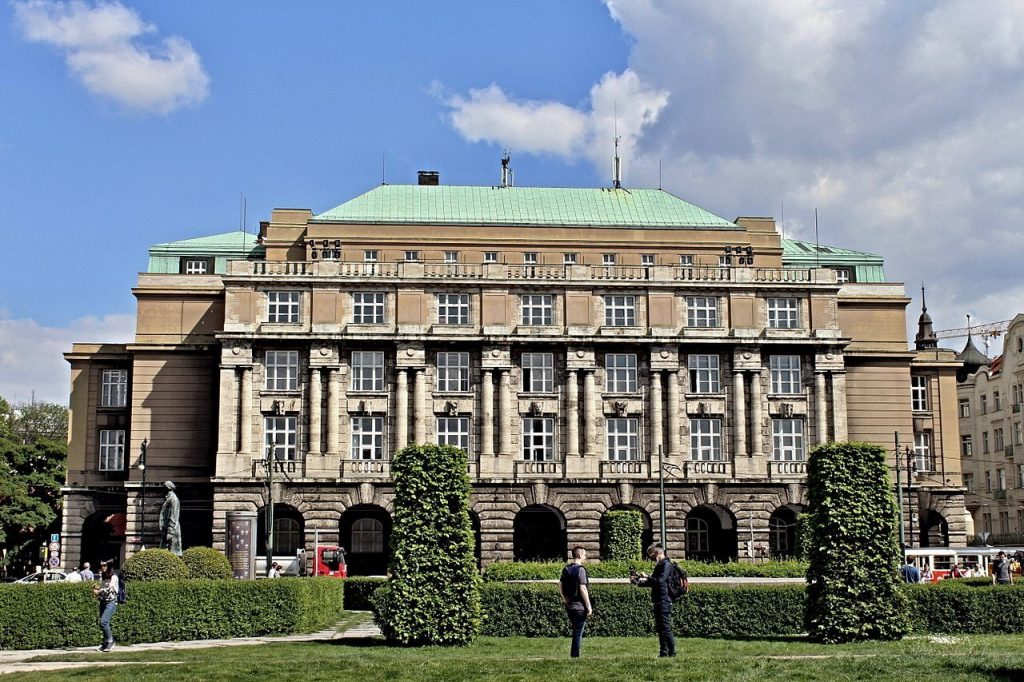
Charles University – the Hotbed of Czech Anti-Cultism
The portal Studentské Listy states that Jakub Jahl is a student at Charles University, specializing in Religious Studies. 4

On this same portal5, Jakub Jahl references Zdeněk Vojtíšek, head of the Department of Religious Studies at the Hussite Theological Faculty of Charles University, and an associate professor at the Protestant Theological Faculty of Charles University.
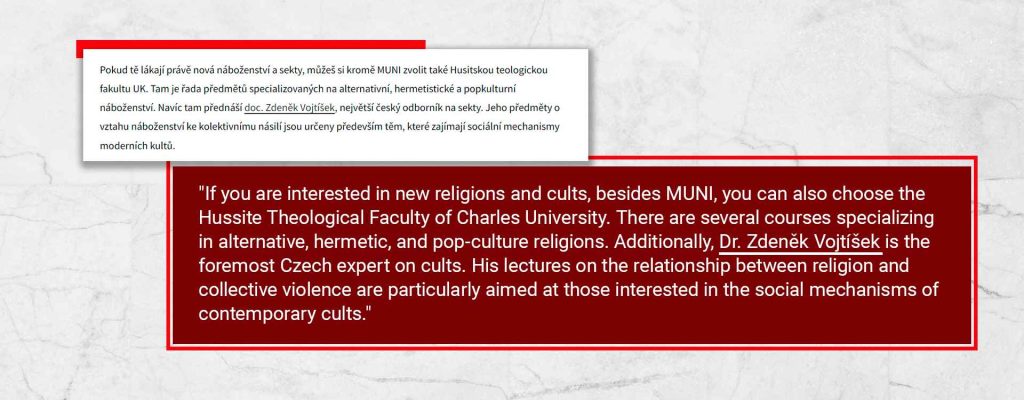
Similarly to Jakub Jahl, Kristina Ciroková frequently references Zdeněk Vojtíšek in her work6:
“About this cult, which is rooted in the Christian tradition, our leading expert on new religious movements, religious scholar Zdeněk Vojtíšek from the Hussite Theological Faculty of Charles University, has been writing for years in the religious studies journal Dingir. He also lectures about the Twelve Tribes to his students. According to the official list, he is also the only court expert in the country who specializes in religious extremism and terrorism.”
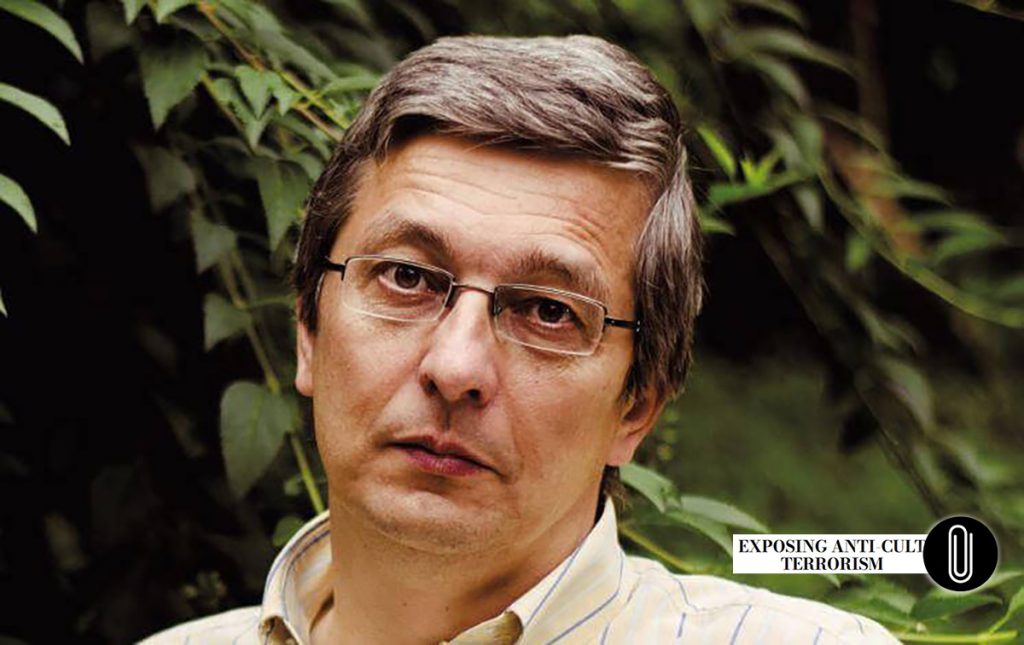
Zdeněk Vojtíšek: Ideological Mentor and Curator of Czech Anti-Cultism
Zdeněk Vojtíšek is a prominent anti-cult activist in the Czech Republic and one of those who often claims their approach to be independent, unbiased, and open to dialogue. He has frequently mentioned this in various issues of the journal Dingir, where he has been the editor-in-chief and founder since 1998. But is this really the case? Let’s examine some details observed in Vojtíšek’s practices:
- He uses the label “cult” despite its inherently derogatory connotation. The editor-in-chief of Dingir concluded that there is no need to replace this term with a less pejorative one, as other scholars, such as James Richardson, have done (terms like ‘emergent religion’, ‘charismatic group’, and ‘new religious movement’ are used in the English-speaking world). According to Zdeněk Vojtíšek, the term ‘sect’ or ‘cult’ accurately reflects the majority’s rejection of the group (Vojtíšek 2004).7
“…the word ‘cult’ will certainly remain in religious studies and likely on the pages of Dingir journal as well.” — Zdeněk Vojtíšek

- Inconsistent Treatment of Different Religious Organizations: Jehovah’s Witnesses, Mormons, and Scientologists often face criticism despite their registered status as churches, unlike the established religions.
- Double Standards and Implicit Discrimination: The principle of “not referring to religious groups in offensive or disparaging terms” is not upheld in practice. For example, the recruitment of new members into new religious movements and their initial involvement is frequently compared to drug addiction, a term with inherently negative connotations.
- Monopoly on Opinion: The narratives promoted by Czech anti-cultists regarding new religious movements align closely with those in Czech media, indicating direct interaction between the two. Moreover, their undeniable influence over the press is evident because the opinions from other religious scholars who are not part of this anti-cult group are simply disregarded by journalists. Since the early 1990s, the Czech press has consulted exclusively Zdeněk Vojtíšek and his colleagues on religious matters. This phenomenon limits freedom of speech and diversity of opinions and contradicts fundamental democratic principles.
Furthermore, in an issue of Dingir, Zdeněk Vojtíšek expressed his admiration for Johannes Aagaard and his global network of students and colleagues8:
“…Finally, the third type of research approach for me is the Danish scholar Johannes Aagaard. I must admit that I admire him, his students, and colleagues worldwide for their ability to make quick critical judgments based on their knowledge of how the studied religious groups operate. After his public debates with representatives of Scientology and the Family, I became convinced that these unfortunate representatives must leave convinced that someone knows their maneuvers and manipulative techniques better than they do themselves. If we say that Melton sets aside his personal biases in his scientific work, and Barker sheds the lens of her culture, then Aagaard completely discards all illusions about the groups he studies and hears the underlying tones of the messages they convey.“

To truly understand the admiration for Johannes Aagaard and his followers, as well as what kind of people they are and whose followers they are, it is essential to focus on this figure and his connections with other anti-cultists.
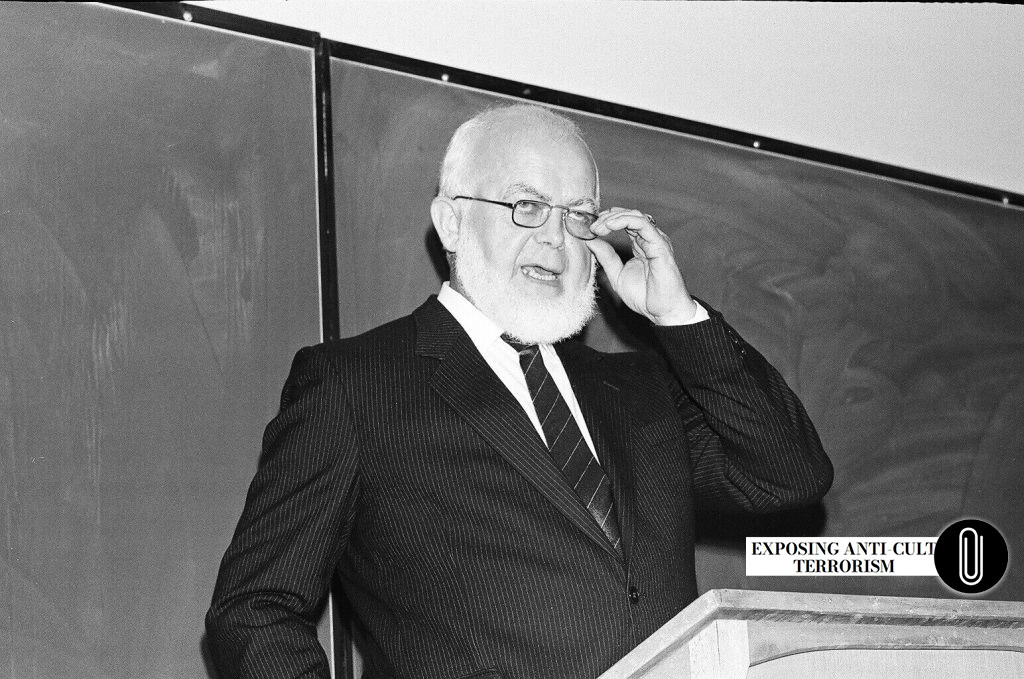
Johannes Aagaard and Wilhelm Haack: The Nazi Legacy and the Creation of Dialog Center International (DCI)
Johannes Aagaard, a Dane, is considered the father of the modern anti-cult movement and a mentor to many well-known anti-cult activists worldwide. He continued the 20th-century anti-cult tradition dating back to the Third Reich.
Aagaard founded Dialog Center International (DCI) in 1973 with the help of his “brother in faith” Wilhelm Haack, who became the vice-president and co-founder of the international Dialog Center in 1981. Before this, in 1964, Haack was appointed as the Commissioner for Sects and Faith Issues of the Evangelical Lutheran Church in Bavaria, continuing the work of Nazi ideologue, theologian, anti-Semite, and anti-cult predecessor Walter Künneth. Haack became the leading anti-cult ideologist in Europe. Speaking about his appointment as Sektenbeauftragter, Haack stated it was a coincidence and providence 9:
“I am inclined to believe that things just happen. Call it providence, if you will” (Wartmann and Madaj, 1987: 109).
However, this was not a coincidence. Wilhelm Haack studied Protestant theology in Bavaria at the University of Nuremberg at the same time when Walter Künneth was a professor of Protestant theology there. In the early 1970s, Haack revived the Nazi-era name “Working Group on Religious and Ideological Issues,” previously known as the “Department of Religious and Ideological Issues” under the Nazis. It is worth noting that Wilhelm Haack was linked to Freemasonry, as evidenced by his receiving the Bernhard Beyer Medaille from the United Grand Lodges of Germany (Vereinigten Großlogen von Deutschland) in 1982. Haack accepted the award but explained to the public that it was a token of appreciation for his publication on Freemasonry (Haack, 1981b).

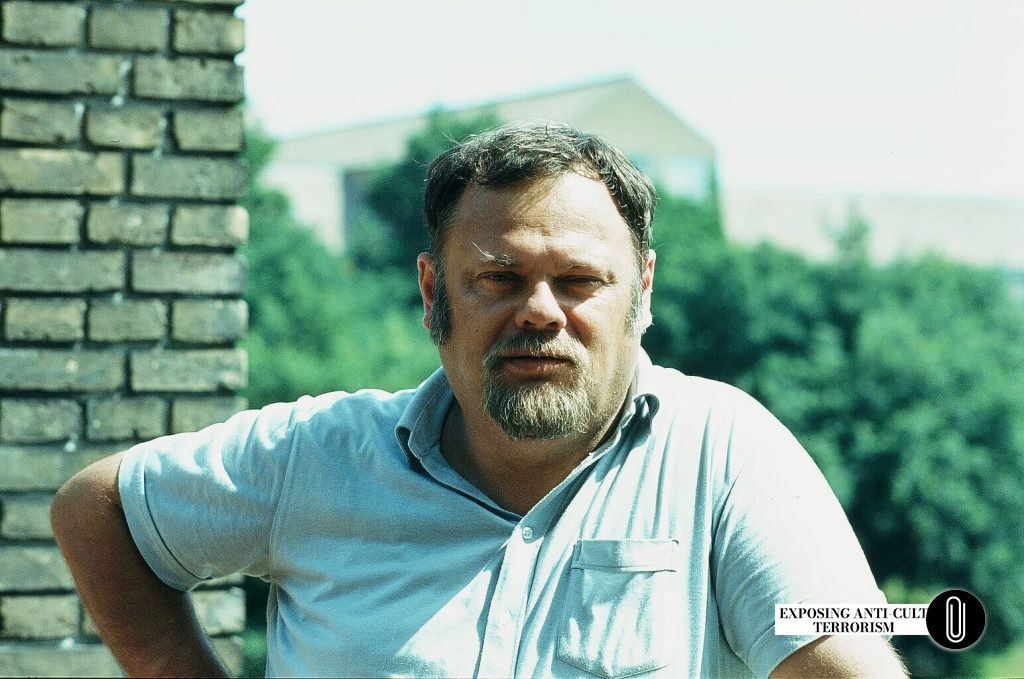
In 1985, Wilhelm Haack was appointed to the Committee for Interfaith Dialogue of the Lutheran World Federation and joined the advisory board of the American Family Foundation (now the International Cultic Studies Association). Another delegate from the Lutheran World Federation was the wife of Johannes Aagaard, Professor Dr. Anna Marie Aagaard 10.

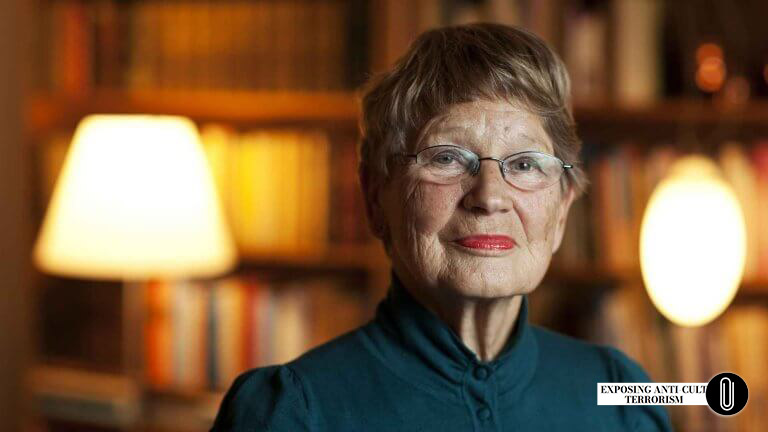

Johannes Aagaard, along with Thomas Gandow, established the apologetic journal “BERLINER DIALOG,” which is similar to the Update & Dialog publication of the Dialog Center. Thomas Gandow, a Lutheran pastor and the new president of DCI, was awarded the Order of Merit of the Federal Republic of Germany in 2012.
In addition to Germany and Denmark, DCI established branches in Ireland, Russia, and the United Kingdom. According to information on the website of religious scholar Zdeněk Vojtíšek, he studied in both the United Kingdom and the USA. It is possible that, while admiring the students and colleagues of Johannes Aagaard, Vojtíšek visited their UK branch during his stay there to gain experience or access relevant literature 11.
“I attempted to supplement my education mainly during three stays abroad – the longest in the United Kingdom and twice in the United States.”
“In 2003, thanks to my study stay in the United States (and thus thanks to almost unlimited access to relevant advisory, psychological, and theological professional literature), I found a suitable model.“
In the journal “BERLINER DIALOG” of the International Dialogue Center, editorial staff and correspondents are acknowledged. Among the editorial staff, Johannes Aagaard and Thomas Gandow are noted, while among the correspondents, Zdeněk Vojtíšek is mentioned 12.



Another favorite student of Johannes Aagaard, whom he repeatedly defended in court, is Alexander Dvorkin, Vice President of DCI and its representative in Russia. The extent of the influence these individuals have on society and all the destructive consequences of this influence are thoroughly detailed in the documentary film “The IMPACT” (2024). It is important to note that in 1993, Alexander Dvorkin initiated the anti-cult movement in Russia by founding the Information and Consultation Center in the name of St. Irenaeus of Lyons, of which he remains president to this day. The Center in the name of Irenaeus of Lyons is also modeled entirely after the Nazi apologetic center created by Walter Künneth.
1993
1993 was a pivotal year in the plans for global anti-cultism. In addition to the opening of the anti-cult center in Russia, similar events took place around the world (including in the Czech Republic), which contributed to the active development of international anti-cult organizations in the following decades.
Specifically:
- FECRIS Federation: Although it was officially established in 1994, it was in 1993 that a decision to create the umbrella organization FECRIS was made at an international symposium organized by the Spanish association A.I.S. in Barcelona at the request of the French anti-cult association UNADFI. FECRIS would later encompass many anti-cult organizations established in different countries.
- In 1993, in the United States, the activities of American anti-cultists and deprogrammers like Rick Ross and Steven Hassan sharply increased. They effectively received a green light for their activities, gaining expanded opportunities. American media, government representatives, and even law enforcement agencies (including the FBI) began consulting them.
- In 1993, in the Czech Republic, the anti-cult association called the “Society for the Study of Sects and New Religious Movements” was founded. One of its founders is Zdeněk Vojtíšek.
The Society for the Study of Sects and New Religious Movements (SSSNNS): Its Dehumanizing and Destructive Influence on Individuals
As previously mentioned, this association was founded in 1993. It is organized within the Hussite Theological Faculty of Charles University. Zdeněk Vojtíšek is a founding member and one of the leaders of the “Society for the Study of Sects and New Religious Movements.” Despite the association’s claimed impartiality and scientific approach, external experts,* religious scholars and sociologists who have analyzed their publications conclude that their true objectives are to portray new religious movements as problematic, dangerous, and somewhat illegitimate groups. While their descriptions often carry a stigmatizing tone, which certainly does not foster open interfaith dialogue.
*For example: Dušan Lužný, Zdeněk Nešpor, Milan Fujda, David Zbíral, Andrea Beláňová.
It has been noted that their media presence and rhetoric in the media often manifest as evaluative judgments filled with negative connotations. This resulted in resistance to views and practices perceived by members of the “Society for the Study of Sects and New Religious Movements” as unorthodox, deviant, and consequently, potentially dangerous. From one anti-cult publication to another, there are noticeable implicit oppositions:
– Traditional church vs. sect,
– Safety vs. societal threat,
– Familiar and customary vs. foreign and unknown,
– Church missionary work vs. illegitimate recruitment using manipulation in a sect (cult).
Considering that media-based informational terror attacks are currently one of the main causes of spikes in post-traumatic stress disorders among the population, it is reasonable to conclude that the activities of anti-cult organizations have traumatic consequences on people’s health. Today, there are several medical studies 13, 14 that confirm that exposure to traumatic content can activate fear schemas in the brain, trigger negative memories, and generally lead to post-traumatic mental disorders in individuals. While repeated coverage of traumatic dehumanizing stories in the media can prolong acute experiences. Depressive thoughts constantly replayed in the mind can exacerbate stress, worsening a person’s mental state and directly affecting their physical health.
The double standards of this association are reflected in its very name: “Society for the Study of Sects and New Religious Movements,” meaning that there are religious movements and there are sects (or cults) separately, knowingly deprived of the right to social status by this division.
In light of the above, the question remains: how is it that today, in an era of democracy, freedom of speech, and freedom of opinion, there are self-proclaimed public arbiters deciding who, what, and how to believe, passing judgments on whether certain organizations are acceptable, thus actively contributing to the revival of Nazism?
Anti-cult organizations, through their activities, directly oppose all principles of democracy, consistently and systematically violating the law, endangering lives, violating the presumption of innocence, dehumanizing people, inciting religious hatred in the rest of society, and creating informational terror attacks in the media.
Speech by Steven Hassan at Charles University in Prague
Every two years the International Academy of Law and Mental Health (IALMH) holds an International Congress. In 2017, this congress was held in the Czech Republic in Prague at Charles University. One of the attendees of this event was Steven Hassan, an American anti-cultist and deprogrammer 15.
Steven Hassan recently shared this memory on his Facebook page, where he mentioned his visit to Prague and presence at this congress in 2017.

This event was mentioned in the journal Dingir (DINGIR 4/2017), whose editor-in-chief is Zdeněk Vojtíšek. Moreover, Claire Klingenberg, a student at the Hussite Theological Faculty of Charles University, interviewed Steven Hassan* on July 8, 2017. The interview was edited by Zdeněk Wojtisek and published in Dingir 16.
*Steven Hassan is an American anti-cultist and deprogrammer, and a formerly active member of CAN, a criminal organization repeatedly convicted of kidnapping, forcible detention, and psychological, physical, and sometimes sexual abuse against individuals.
As stated in an article published in The Dingir:
“Steven Hassan has had an extraordinary, albeit indirect, impact on Czech society. His book Combating Mind Control (1990) was published in Czech under the title “Jak čelit psychické manipulaci zhoubných kultů” (How to Counter the Psychological Manipulation of Pernicious Cults) (Brno: Tomáš Janeček Publishing House, 1994) and throughout the 1990s had a strong influence on Czech debates about modern religiosity.”
“His [Steven Hassan’s] sharply critical stance on new religious movements is evident in his rejection of this neutral term, consistently referring to them as ‘cults’.”

After reading this interview, one may get the impression that it was conducted not by a future professional, unbiased expert in the field of religious studies, but by yet another anti-cultist who is familiar only with such dehumanizing labels as “sect” and “cult”, and never once uses the more respectful expression “new religious movements”. What do they teach at Charles University about religious studies? Or does the presence of an interviewee in the person of deprogrammer and criminal gang member Steven Hassan allow an independent expert who claims to be competent to change her rhetoric? This is not only a question for the interviewer, but also for her university professors.
Another student at Charles University previously mentioned in this article, future religious scholar Jakub Jahl, employs a technique similar to the one used by deprogrammer Steven Hassan in his book – he uses in his writings the pejorative label “cult” in reference to Donald Trump.
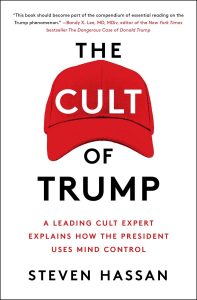
In his book The Cult of Trump, anti-cultist Hassan compares President Donald Trump to people like Jim Jones, David Koresh, Ron Hubbard and Sang Myung Moon, arguing that the presidency is much like a destructive cult. Likewise, Czech anti-cultist Jakub Jahl links Donald Trump to the Mormons*.
- In the work Budoucnost jednoho iluzionisty: Kritické zhodnocení eseje Sigmunda Freuda “Budoucnost jedné iluze” (“The Future of an Illusionist: A Critical Evaluation of Sigmund Freud’s Essay ‘The Future of an Illusion'”) 17
- And in the work «Q rides in on a white horse: Conspiracy theories among Mormons / Why does a 16-million-strong American religion tend toward QAnon?» 18
- Budoucnost jednoho iluzionisty: Kritické zhodnocení eseje Sigmunda Freuda “Budoucnost jedné iluze” (“The Future of an Illusionist: A Critical Evaluation of Sigmund Freud’s Essay ‘The Future of an Illusion'”)
“Part of society naturally falls outside all these mentioned categories and is certainly a fertile ground for the formation of non-traditional para-religious movements, especially political cults (Trump’s MAGA cult, Babiš’s political cult, etc.) and conspiracist movements.” [MOU1]
- Another work by Jakub Jahl «Q rides in on a white horse: Conspiracy theories among Mormons / Why does a 16-million-strong American religion tend toward QAnon?»18
«In this paper, I will attempt to summarize all of these themes, but also add my interpretation of why the Mormon conspiracy scene is becoming more visible in the current era and pathologized in the form of the violent uprising of Trump supporters at the U.S. Capitol».[MOU1]
During this event, a storm was supposed to be overthrowing the puppet government of the United States, not unlike the Trump crowd attempted to do in January 2021.
It is now widely believed that the person behind the Q account is Ron Watkinson, a Trump supporter and administrator of the 8chan network where Q first appeared. But he is not Trump’s only prophet, as is evident from Taylor’s conspiracy church, which operates on a similar basis to QAnon (but with a publicly known leader).
“So the question is where will the Mormon conspiracy movement go from here, as this informal community is desperate for a leader who will fulfill their vision. However, with the upcoming presidential candidacy of Donald Trump in 2024 and the resurgence of QAnon activity, it is reasonable to fear the another radicalization of Mormon neo-fundamentalists. The LDS Church is not very good at dealing with this phenomenon and, apart from excommunicating specific individuals, has few tools to prevent the fundamentalists in its midst from developing further. So it seems that the neo-fundamentalist movement will grow and find new ways to spread its vision among Mormon members.”
As we can see, both representatives of the anti-cult movement apply the labels “cult” and “sect”. Both anti-cultists use the Nazi method of “guilt by association,” and a method of dehumanization and stigmatization. They compare previously stigmatized and dehumanized organizations with Donald Trump. Apparently, based on the statement in The Dingir, Zdeněk Vojtíšek is right: indeed, Steven Hassan has had an extraordinary influence on the Czech anti-cult movement in general and his disciples in particular.
However, while Steven Hassan has had an extraordinary influence on the Czech anti-cult movement, Alexander Dvorkin from Russia (former vice-president of DCI, currently president of RACIRS), Thomas Gandow from Germany (president of DCI), Johannes Aagaard from Denmark (founder and president of DCI until 2003) and Tomáš Novotný from the Czech Republic (SSSNNS) have had a profound influence on the Slovak anti-cult movement as early as 1998 19:




There are other members of the anti-cult movement besides Jakub Jahl and Kristina Ciroková, as well as representatives of the “Society for the Study of Sects and New Religious Movements”, among them Ivan O. Štampač, Zdeněk Vojtíšek, Aleš Opatrny, Tomáš Novotny and Prokop Remeš, many of whom are connected with Charles University while others are connected with the media. Their activities are also noticeable in the information space of their neighboring country, Slovakia. For instance, the Slovak anti-cult website INTEGRA 20

This website lists literature by Steven Hassan among its recommended readings 21.

Conclusion
Observing the actions of Czech anti-cultists today brings to mind how the Lutheran Apologetic Center led by Walter Künneth had acted in the past before the Nazis came to power, and how it changed its rhetoric during their rise to power. Initially, the Lutherans’ activities were conducted under the “noble” pretext of merely creating lists of religious organizations, which they would later label as “cults” and “sects.” Yet later on, it was the Lutherans who revived an extreme form of violent inquisition, and it was the Lutheran centers for the study of cults that contributed to making the National Socialist Party of Germany an extreme form of Nazism in its most brutal form known in history.
What is the new generation of anti-cultists in the Czech Republic, including students of Charles University, actually studying today? And what are the goals of the growing anti-cult movement as a whole? Are they future deprogrammers and mind control experts? Or self-proclaimed arbiters of human destinies who imagine themselves as gods? Time will tell. The main thing is that we do not become witnesses to another lesson in history, where yet another successor of an apologetic center, committed to fighting sects, compels millions to shout: “Heil, Hitler!”
Sources:
1. https://www.seznamzpravy.cz/clanek/domaci-kauzy-nabozenskou-sektu-na-severu-cech-proveruje-uz-i-socialka-233591
2. https://sekty.tv/2024/03/17/nabozenskou-sektu-na-severu-cech-proveruje-uz-i-socialka/
3. https://www.youtube.com/watch?v=_7wS-H2bL1U
4. https://slisty.cz/o-nas/kdo-jsme/
5. https://slisty.cz/studium-religionistiky-jak-se-pripravit-na-prijimacky/
6. https://www.seznamzpravy.cz/clanek/audio-podcast-5-59-dvanact-kmenu-bije-deti-podle-religionisty-jsou-to-milujici-rodice-252228
7. https://dingir.cz/archiv/Dingir404.pdf
8. https://www.dingir.cz/index.php?co=web/hledisko
9. https://library.oapen.org/bitstream/id/c9c6cd4c-62ce-47e9-9365-e3a578ef6f00/1005983.pdf
10. https://unipub.uni-graz.at/download/pdf/421881.pdf
11. https://www.zvojtisek.cz/index.php?co=poradenstvi/uvod
12. https://www.religio.de/dialog/295/impres295.html
13. https://pubmed.ncbi.nlm.nih.gov/23171530/
14. https://pubmed.ncbi.nlm.nih.gov/9599436/
15. https://www.facebook.com/freedomofmind1/
16. https://dingir.cz/cislo/17/4/lide_jsou_velmi_ovlivnitelni.pdf
17. https://www.academia.edu/97359042/Budoucnost_jednoho_iluzionisty_Kritick%C3%A9_zhodnocen%C3%AD_eseje_Sigmunda_Freuda_Budoucnost_jedn%C3%A9_iluze_
18. https://www.academia.edu/94803748/Q_rides_in_on_a_white_horse_Conspiracy_theories_among_Mormons_Why_does_a_16_million_strong_American_religion_tend_toward_QAnon_Jakub_Jahl_
19. http://www.index.sk/michael/AKTUALITY/indexright.htm
20. https://oz-integra.sk/
21. https://oz-integra.sk/zoznam-literatury-o-z-integra/
